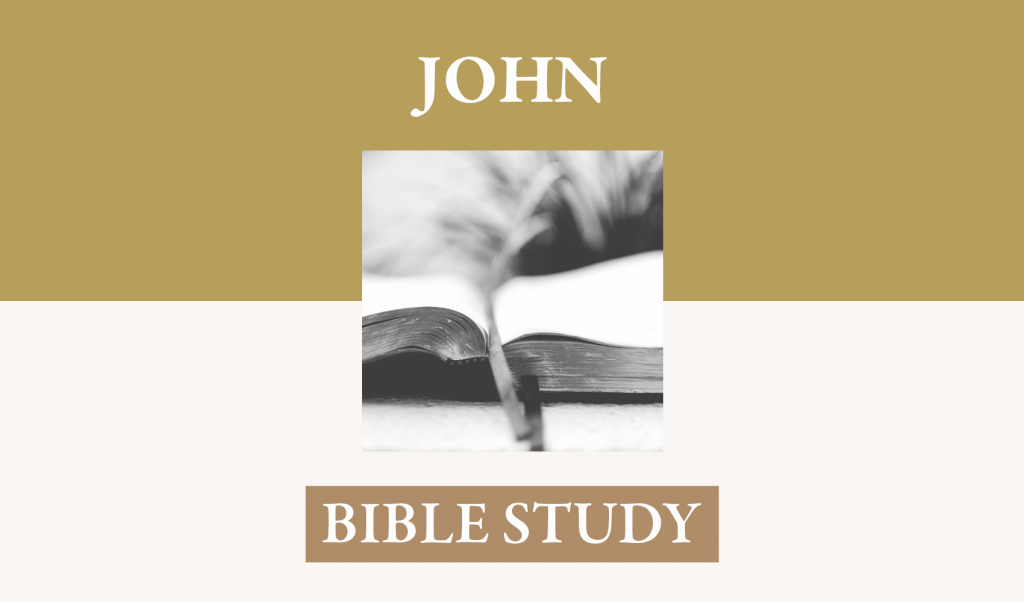Week of November 17, 2019
The Point: We bring glory to God when we obey His will.
Jesus Raises Lazarus: John 11:1-4, 38-45.
[1] Now a certain man was ill, Lazarus of Bethany, the village of Mary and her sister Martha. [2] It was Mary who anointed the Lord with ointment and wiped his feet with her hair, whose brother Lazarus was ill. [3] So the sisters sent to him, saying, “Lord, he whom you love is ill.” [4] But when Jesus heard it he said, “This illness does not lead to death. It is for the glory of God, so that the Son of God may be glorified through it.” [38] Then Jesus, deeply moved again, came to the tomb. It was a cave, and a stone lay against it. [39] Jesus said, “Take away the stone.” Martha, the sister of the dead man, said to him, “Lord, by this time there will be an odor, for he has been dead four days.” [40] Jesus said to her, “Did I not tell you that if you believed you would see the glory of God?” [41] So they took away the stone. And Jesus lifted up his eyes and said, “Father, I thank you that you have heard me. [42] I knew that you always hear me, but I said this on account of the people standing around, that they may believe that you sent me.” [43] When he had said these things, he cried out with a loud voice, “Lazarus, come out.” [44] The man who had died came out, his hands and feet bound with linen strips, and his face wrapped with a cloth. Jesus said to them, “Unbind him, and let him go.” [45] Many of the Jews therefore, who had come with Mary and had seen what he did, believed in him, [ESV]
“The sickness and death of Lazarus of Bethany [11:1-16]. The revealing of His glory [1:14] through the signs [2:11] now reaches its final stage with the greatest sign, the raising of Lazarus from the dead, an action which will lead inexorably on to the all-surpassing sign of the death and resurrection of Jesus Himself. Jesus has withdrawn from Jerusalem prior to His return to the city for the final Passover, as was noted in 10:40. His preparation for that supremely demanding crisis is interrupted by an urgent request for help. This comes from a family especially close to Him, living at Bethany, a few miles south east of Jerusalem. The family consists of two sisters, Martha and Mary, and their brother, Lazarus. John identifies Mary as the one who anointed the Lord with ointment and wiped his feet with her hair [2]. This anticipates what we learn about her in the next chapter [12:1-8], and the description is no doubt to distinguish her from other Marys in the gospel. When their brother falls seriously ill the sisters send to Jesus for help. Their message is somewhat oblique – Lord, he whom you love is ill [3]. It may be that they were informed of His recent encounter with the authorities in Jerusalem, and recognized that to bring Him again to the vicinity of the city would be dangerous. Certainly Thomas is in no doubt about the folly of such a journey in these circumstances [16]. The wording may be a conscious compromise. Perhaps they are also aware of Jesus having healed on a previous occasion by means of a word, without His physical presence being necessary [4:43-54]. The message hints at friendships and relationships that are barely explored in the Gospels, and suggests that some at least felt peculiarly loved by Him. Jesus responds to the message by making two comments on the illness of Lazarus, and by deliberately choosing to stay where he was two more days [6]. His first comment is that the sickness will not prove fatal in the long run [4]. This initial reaction sets the scene for what follows. Lazarus, a beloved and valued friend, has succumbed to the power of sickness, the emissary of the ‘god of this world’. But the power of sickness, this manifestation of the fall, will not have the final say. The final outcome will be life, not death, therein manifesting the glory of the Son, the dethroning of the god of this world, and the further glory of the Father through Him [4]. Jesus’ attitude to sickness here is parallel to 9:3: the sickness provides a platform so that the works of God might be displayed in him. What is true here at the level of physical illness can be extended to all the trials we face as Christian disciples. Our natural response is to rebel against them as alien intruders, which must be expelled from our lives as quickly and painlessly as possible by every means available, including God’s miraculous intervention. With hindsight, however, another perspective is possible. We can offer our trials to God for Him either to remove or retain as He pleases, thereby bringing glory to His name and deepening our faith, and possibly that of others too. According to verse 6, Jesus, receiving the news of Lazarus’ condition, deliberately remained where He was for two further days before making any response. This is in no way a contradiction of His love for the family [5]. The delays of God are clearly part of the biblical record. Many find the question of delays raised for them personally as they pray through long years for some particular need, perhaps some personal disability they seek freedom from, or a loved one for whose salvation they yearn. Others struggle with some promise of God which remains unfulfilled after weary years of waiting. This story teaches us two things about God’s delays. The first is that they are inevitable. Since we are mere finite creatures, we are necessarily largely unaware of the circumstances which surround the events taking place in our lives and those of others, as well as the consequences which result from them. Only God is omniscient. Further, since our desires are not fully renewed, even if we were aware of all the implications, there is no guarantee that we would choose only what was for the highest good for ourselves and others. Our imperfect desires also make us want immediate answers, and render us unprepared for the patient ripening of God’s plans. His delays, however, do not contradict His love. He loves us as fully and as truly when He remains in Transjordan, ministering to others’ needs, as when He journeys to Bethany to minister to ours. The second point about God’s delays is that they are not final. He will come, in His own time and way. No doubt that will frequently be later than we would have chosen. From His divine perspective, however, it will be the right time. God is the best of timekeepers. He created time; He is never late for His appointments. The delay concluded, Jesus gives the order to go to Bethany [15]. The disciples are well aware of the danger there and remind Him of it [8]. In response Jesus warns against over-estimating the danger. Jesus announces that Lazarus has died, first metaphorically [11] and then directly [14]. Sleep, while used of death in the Old Testament, was not a common way of referring to it, which perhaps explains the disciples’ failure to grasp the import. The use of the metaphor by Jesus, both here and in the raising of Jairus’ daughter [Mark 5:39] set the trend for later Christian usage [cf. Acts 7:60; 1 Thess. 4:13]. As a metaphor for death it need not imply the end of all consciousness following the moment of death. In Scripture, sleep is regularly a very ‘active’ experience. Primarily, ‘sleep’ implies the truth of the recovery of consciousness after death. Jesus reiterates that this death of Lazarus is a good death about which He is personally glad, so that you may believe [15]. The pain and anguish of the family are still of less worth than the nourishing of the faith of both the family and the attendant disciples. Once again the cruciality of faith is stressed.
The raising of Lazarus from the dead [11:38-44]. Arriving at the tomb, Jesus, again visibly swept by a tempest of anger, commands its opening [39]. Martha, clearly unable to rise to this ultimate challenge to faith, remonstrates with Jesus. The soul has departed, the body is putrefying [39]. Jesus reminds her of His promise, presumably repeated to the sisters, that all this would end in the glorifying of God. Jesus’ first sign at Cana was the beginning of the revelation of the glory of God in Him. Here in the seventh sign that glory is manifest in its fullest and most authentic manner. Truly here we can echo John’s own witness, we have seen his glory [1:14]. A vocalized prayer to the Father follows [41-42]. In making it Jesus recognizes that its purpose is for those standing by. He Himself is in such constant communion that His prayer is His life. In all His thoughts He stands constantly in His Father’s presence. In the confidence deriving from that position He can express thanks that His petition for the raising of Lazarus, like all His petitions, is truly heard. These verses teach a number of lessons about prayer. Here is its focus – Father. The title is constantly on Jesus’ lips, but it has a peculiar force in this setting. Here also is the confidence of prayer – you have heard me. He is a God defined by His alertness to our cries. Jesus’ words also touch on the style of prayer. It was uttered for the sake of the crowd around. Jesus’ prayer also touches the fruit of prayer, which is faith. As God hears our cries and graciously grants our requests the result is the enriching of faith. In the remembering of God’s past faithfulness our faith grows. Finally, these words also represent a great inducement to pray. Our feeble requests, presented in His name, are gathered within the encircling arms of His great intercession, and placed upon the heart of the Father by Him who ever lives to pray for us. The prayer having been offered, the moment has arrived! Jesus cries, Lazarus, come out [43] and, incredibly, the man who had died came out [44]. Lazarus is immediately drawn forth from the grave by the word of Jesus. Lazarus is again among the living; death has been robbed of its prey. Faith in Jesus as the one sent by the Father and the embodiment of the resurrection life of God is attained [42]. The Son has revealed the Father’s glory and in that revealing has Himself received glory as the one sent by the Father.
Implications of this Sign. The miracle is so striking a manifestation of the authority of Jesus that it fittingly appears in John’s record as the seventh and last sign leading into the final climactic sign of the cross and resurrection. It is therefore right to pause and identify some of its more obvious implications.
- The shadow (s) of God’s love. This derives from the experience of the sisters. Faced with the critical illness of their brother they inform Jesus of the situation, and then experience the anguish of Lazarus’ death before even Jesus appears on the scene. Their joint testimony is eloquent. If you had been here, my brother would not have died. In fact, as the record makes abundantly clear, the sisters and Lazarus were deeply loved by Jesus. Yet in love He withholds Himself and allows them to pass through their hour of dereliction before He comes to them to meet their need. The reason for it is not hidden. I am glad … so that you may believe [15]. It is for the glory of God, so that the Son of God may be glorified through it [4]; … on account of the people … that they may believe [42]. The nature of the love of God for us is thereby revealed. It is not the love of an indulgent parent who gives in to every whim of the child. In the end that is not ‘love’ for the child but a form of self-love in the parent. Despite the massive propaganda to the contrary, our Lord’s purpose for us is not to make us happy, but to make us holy. He loves us too much to leave us part-saved, part-remade, part-sanctified. He wills our holiness, and since suffering produces … [Rom. 5:3], we may expect Him in His love for us to allow things in our lives which, in our self-centered pursuit of happiness, we ourselves would exclude. Yet even in the shadow of His love there is always mercy. Our sorrows are shared by Him; He comes to us in our pain. The end of it all is not only His glory, which needs no further justifying but also our good.
- The sympathy of Jesus. This passage uncovers the fullness of Jesus’ humanity as almost no other within the New Testament gospels. ‘Sympathy’ literally means ‘feeling along with’, and that is who this passage unveils to us – a Savior who shares our feelings! We live in a world swept by great emotions: pity, anger, joy, hatred, desire, rage, love, grief, regret. At times our personal world is invaded by these storms, lifting us to heights of ecstasy, or more often plunging us into depths of agony. In such moments the familiar landmarks lose their power to direct us. We seem not even to know ourselves. But Jesus is there. He has been this way already; He understands.
- The authority of Christ. In the raising of Lazarus the full implications of the union of the Son and the Father in the mission of God to the world become apparent. So absolute is the Son’s commitment to the glorifying of the Father in that mission, that there is nothing which the Father will refuse Him [41-42; 13:3; 17:2]. Accordingly, the Son is invested with all authority in heaven and earth. Nothing is withheld from Him, not even the power of life and death. In making reference to the Son’s authority over death, however, we should note that it includes His mastery of the processes of dissolution and decay. He is Lord of death in the fullness of its power. We try regularly to insulate ourselves from the repugnant aspects of death, the physical and mental destruction which it commonly entails. No one who has watched a loved one changed almost out of recognition, before death has finally brought its welcome release, needs any further words of description. But the thrust of this story is that Christ’s authority extends there also. That too we can bring to Him. Our hope as Christians is a fleshly, bodily hope. Christ’s rule extends over the flesh, and His promise is nothing less than the renewing of all that He has made.
- Hope in face of death. Patently the loser in this story is death, and the one who has the power of death, that is, the devil [Heb. 2:14]. In this sense the story anticipates the resurrection of Jesus Himself. Lazarus represents not merely the dead in general, but in particular the long-forgotten dead, those who have dissolved and disappeared, the decomposed. In the raising of Lazarus Jesus made good His claim, for an hour is coming when all who are in the tombs will hear his voice and come out [John 5:28]. The devil’s power, though real, is limited. His reign in death [Rom. 5:17] is only temporary. Death is the universal fact, the final horizon that conditions all our human dreams and purposes. Sooner or later every person experiences the numbing shock of bereavement and the long shadow it casts over the future. Humanly there is nothing to add. Precisely at this point the realities of faith shine most brightly. Compare these two testimonies. The first is death as viewed by Lord Bertrand Russell, the witness of unbelief. ‘There is darkness without, and when I die there will be darkness within. There is no splendor, no vastness anywhere, only triviality for a moment, and then nothing.’ The second is the witness of belief, death as seen by Kohlbrugge, the nineteenth-century Lutheran theologian and preacher. ‘When I die – I do not die anymore, however – and someone finds my skull, let this skull still preach to him and say: I have no eyes, nevertheless I see Him; though I have no lips, I kiss Him; I have no tongue, yet I sing praise to Him with all who call upon His name. I am a hard skull, yet I am wholly softened and melted in His love; I lay here exposed on God’s Acre, yet I am there in Paradise! All suffering is forgotten! His great love has done this for us when for us He carried His cross and went out to Golgotha.’ In Christ, through their faith in Him, the dead are alive. Though the form and location of their existence is in most respects hidden from us, the reality of their continued life is sure. Many Christians and people of goodwill can echo Martha’s creed in verse 24, respecting her brother. I know that he will rise again in the resurrection on the last day. But Christ takes us beyond that. We are not simply to believe that in some vague future moment those we have loved and lost will be raised up with us. That is true, but it did not need the coming of Jesus to produce that conviction, as Martha’s testimony makes clear. Jesus’ coming means we can go beyond that conviction in two ways. (1) In the coming crisis of His ministry, His death and resurrection, which is foreshadowed here, a certainty of eternal life is attained which would not be possible without these great events. (2) Jesus makes the possession of eternal life a fact of present experience. Thus the Christian can be characterized, as the martyrs of Jesus in every age bear moving witness, by a radiant assurance of the life of glory begun here and now through faith-union with Jesus, the resurrection and the life [25].
- The offer of Jesus. Christ as the Lord of life and death still invites the world to come to Him Death is inevitable for all of us, but Christ has won the victory over death, and shares that victory with all who repent and believe in Him as their Savior and Lord. To respond to Christ’s invitation is to surrender our independence. But to ‘die’ in this sense is to begin to live. As for Jesus, so for us, death leads to resurrection. ‘He is no fool who gives away what he cannot keep in order to gain what he cannot lose’ (Jim Elliot). I am the resurrection and the life. Whoever believes in me, though he die, yet shall he live, and everyone who lives and believes in me shall never die. Do you believe this [25-26].” [Milne, pp. 156-171].
Questions for Discussion:
- What do we learn about Jesus in these verses? What do we learn about His attitude towards human sickness and death? How does His attitude impact the way we view sickness and death?
- Every believer experiences God’s delays in answering our prayers. In this event we see how Jesus delays in responding to the sisters’ request. What do we learn here concerning how we should deal with God’s delays in our lives? What is God’s purpose for us in these delays?
- What lessons do we learn concerning prayer: its focus, confidence, style, fruit, and inducement? How can we apply these lessons to our prayer life?
- What five implications of this seventh sign does Milne give us? Pray and think about how you can apply these implications to your daily walk with Jesus.
References:
The Gospel of John, vol. 3, James Boice, Baker.
John, Andreas Kostenberger, BENT, Baker.
The Message of John, Bruce Milne, Inter Varsity (ebook).
John, vol. 2, Richard Phillips, REC, P & R Publishing.





















